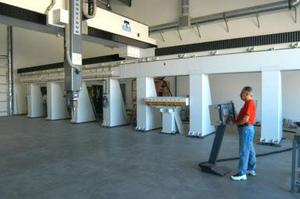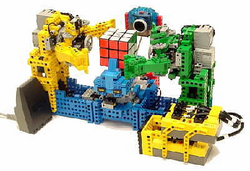Yesterday Burt Rutan and the entire cast and crew of Scaled Composites won the Ansari X Prize. Why them? Do they have better engineers than any other contender? Perhaps, but not likely. More funding? Nope. Better equipment? I doubt they have anything which couldn’t be bought by another contender. More wisdom and tacit knowledge, gained by years of knowing by doing? Check.
If you were to design a venture with sole purpose of winning the X Prize, you couldn’t do much better than Scaled Composites. Looking back on their history of bringing lightweight, high-performance, low-cost solutions to market, you might even think that Rutan had the X Prize in his head all along. He didn’t, of course, but on the other hand, he did.
Scaled Composites is a classic example of creating option value by using iteration to get into the flow of the opportunity stream. By option value, I don’t mean the value of a share of stock. Instead, I mean the value of future opportunities that open up by doing something today – creating options to do the things you want to do in the future. By creating the first VariEze, Scaled Composites opened up the possibility to someday create a round-the-world plane. Why? Because in meeting the challenges of building the VariEze, they forged a culture that values having a 50ft x 20ft x 8ft axis CNC mill on site (that’s it above), whose massive potentiality can’t help but spark the imagination of their staff! And by doing that round-the-world plane, they created the potential to build a space place, and so on and so forth… by actually doing things, you gain deep experience and the kind of tacit organizational knowledge which helps make you a prime contender for things like the X Prize.
Through conscious iteration, the people in a venture can position themselves to take advantage of any opportunity that may come their way, and the sky is the limit.


 Iridium. It was the ill-fated venture which placed 66 (out of a planned 77) communication satellites into orbit before finding out that the value proposition was fundamentally flawed. Millions of dollars were lost along the way. Could this fate have been avoided?
Iridium. It was the ill-fated venture which placed 66 (out of a planned 77) communication satellites into orbit before finding out that the value proposition was fundamentally flawed. Millions of dollars were lost along the way. Could this fate have been avoided?